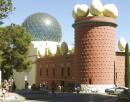- Thinking about the contemporary?
Critics, curators, artists and theorists of art and aesthetics of different nationalities and creeds are currently questioning the concept of contemporary art.
Is the contemporary only a general label to designate the trends of change and renewal of being and doing of art emerged during the last three decades of the last century?
When we speak of contemporary art, do we remove it from the relational notion of contemporaneity common to history?
Would it be logical to reduce what is “contemporary” only to what has arisen after the so-called modernity?
Is the definition of contemporary art more a resource for collecting productions, distinguishing market areas or identifying typologies?
When a creative artist conceives her work, is she thinking whether or not what she does is “contemporary”?
To say contemporary in art is to refer to a way of manifesting itself or is it an attitude of the spirit, a cultural predisposition?
Is not the title of “contemporary artist” equivalent in its imprecision to that other official term of “artistic vanguard”?
Could we admit, as contemporary artistic producers, those who are empty, conservative, repetitive and elementary?
To call “contemporary” any art that is not historical or classic is enough to characterize what the multiplicity of creative paths has added to the history of art?
Why persist in classifying as “contemporary” many lines of expression concretized by artists, without first indicating the meaning of the contemporary we are referring to?
Can we conceive the contemporary disconnected from the temporal synchronism with a certain reality, human group, individual or cultural entity?
Have you not visited, and considered as an incongruity, galleries that use the label of “contemporary art” for works that come from very different aesthetics?
Does not that turn the artists' gaze back to creations from earlier times, is it not also a way of reaffirming value not wholly subject to the age of origin inherent in art?
If in true art there is a contemporary dimension of the artistic, can there be a dimension that makes it a patrimony of aesthetic communication in force for all times and perceptions?




























































